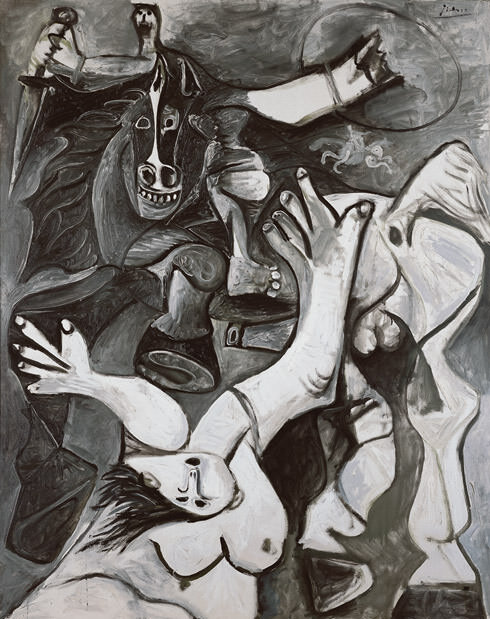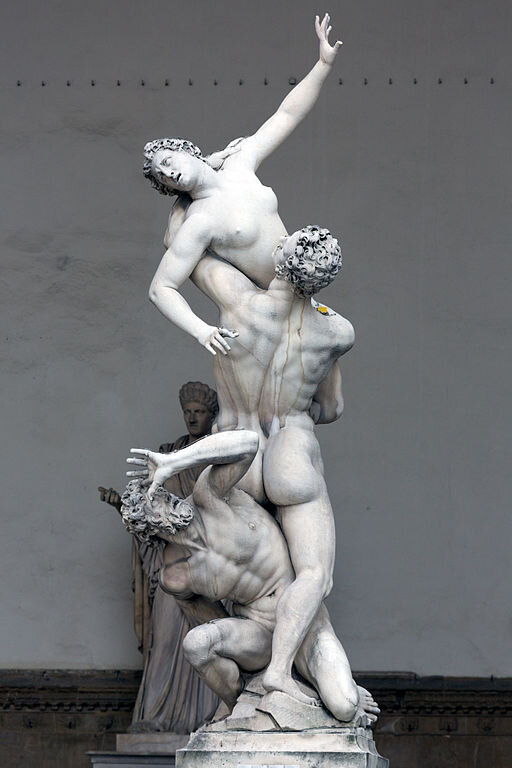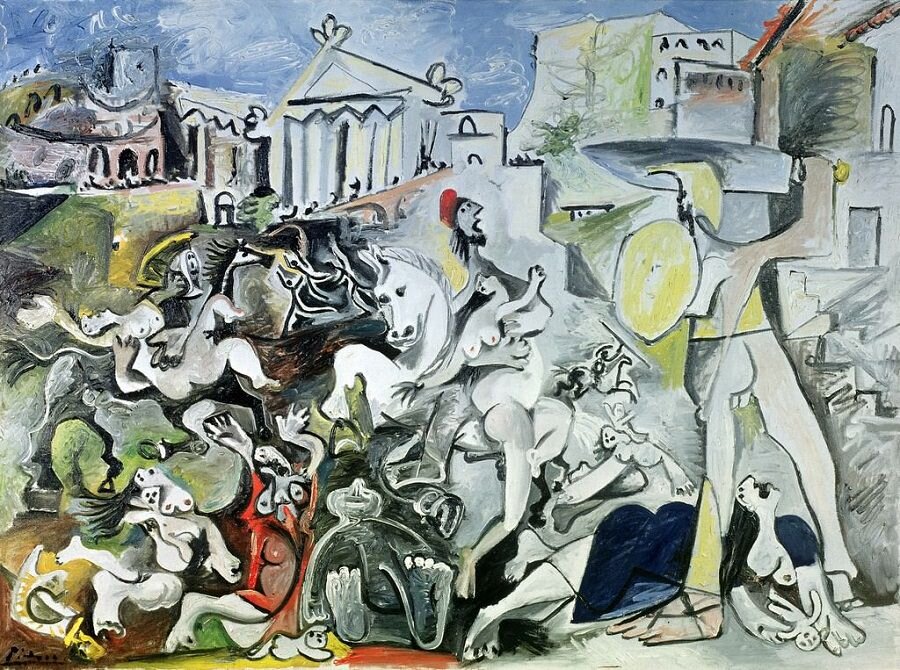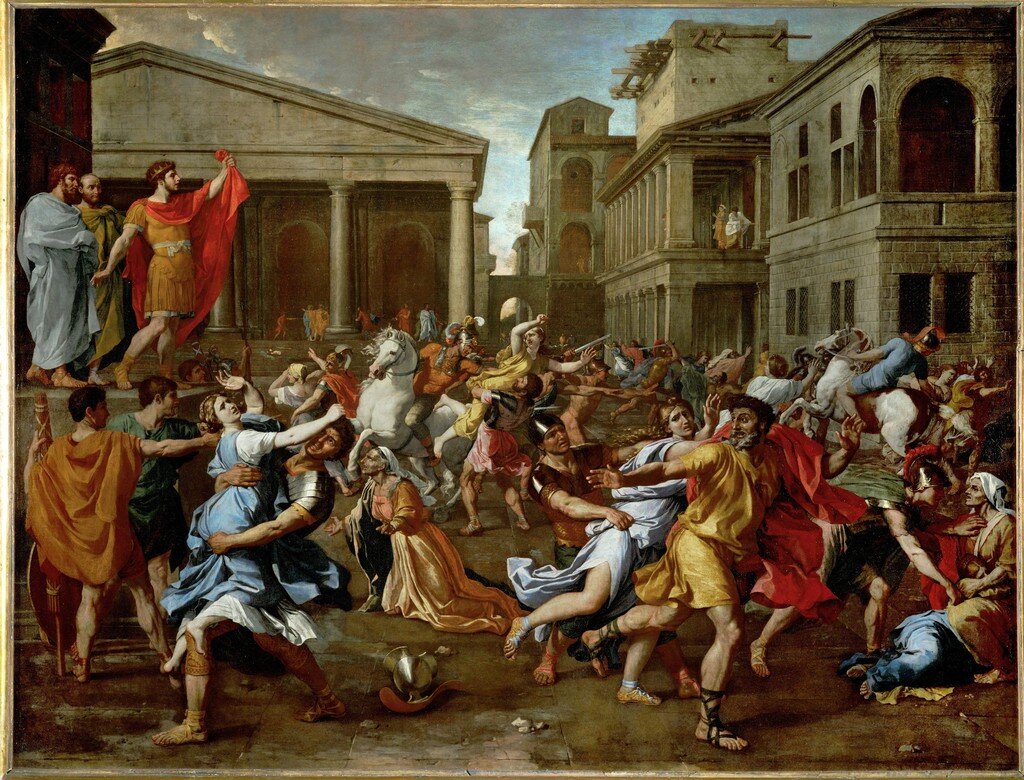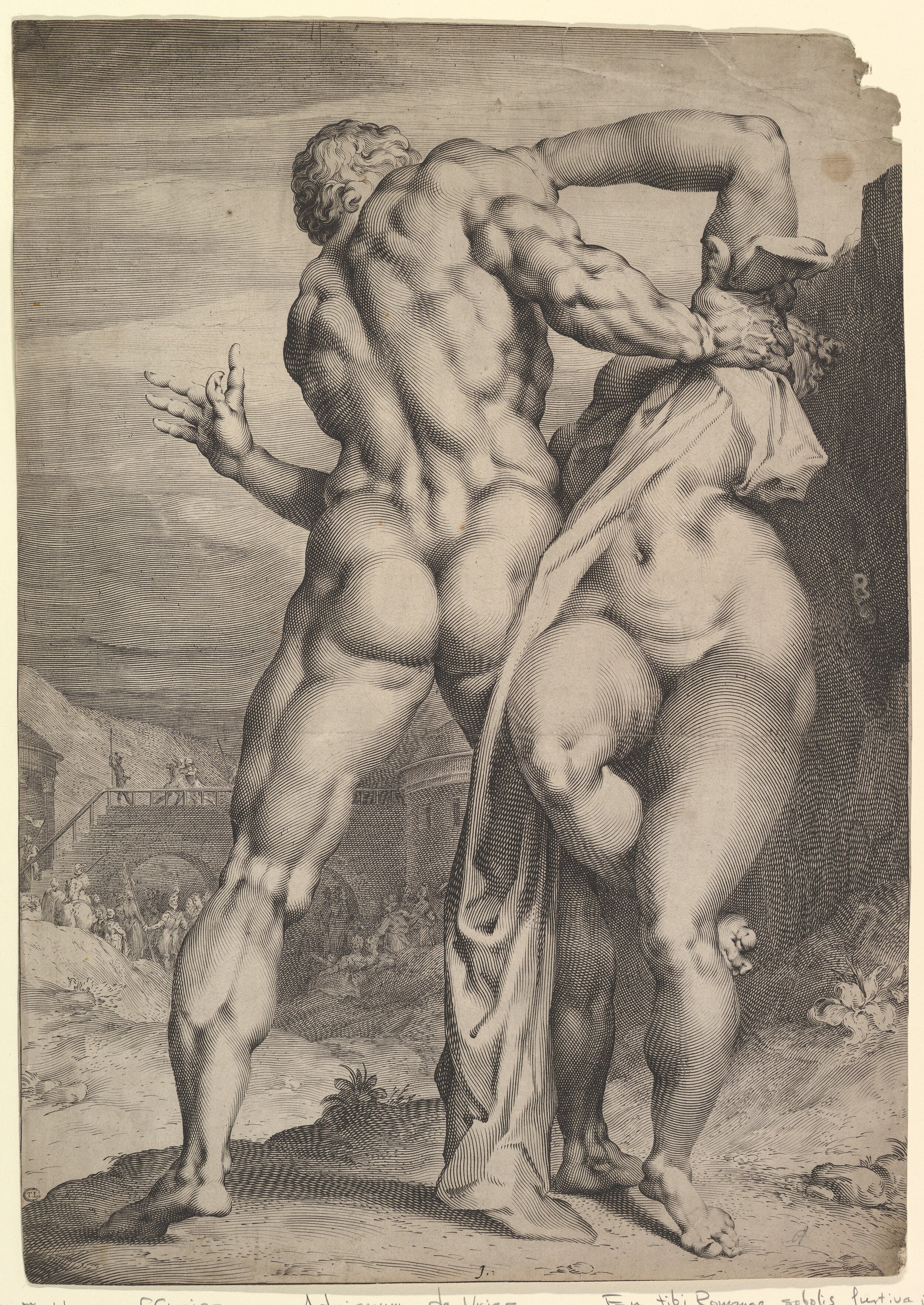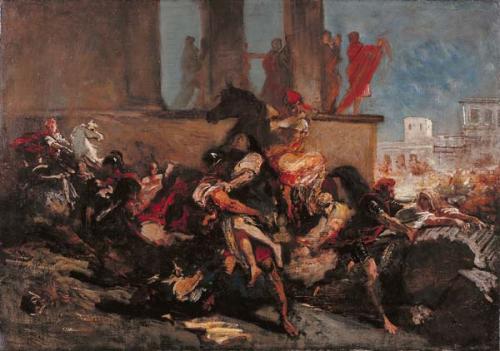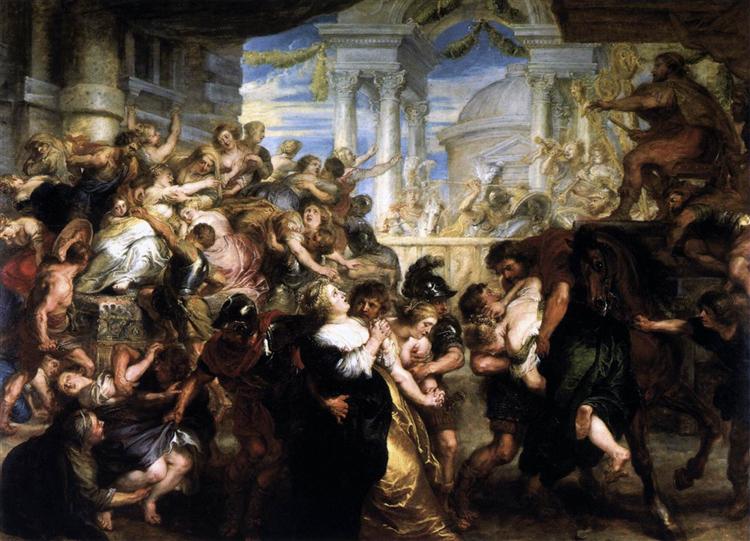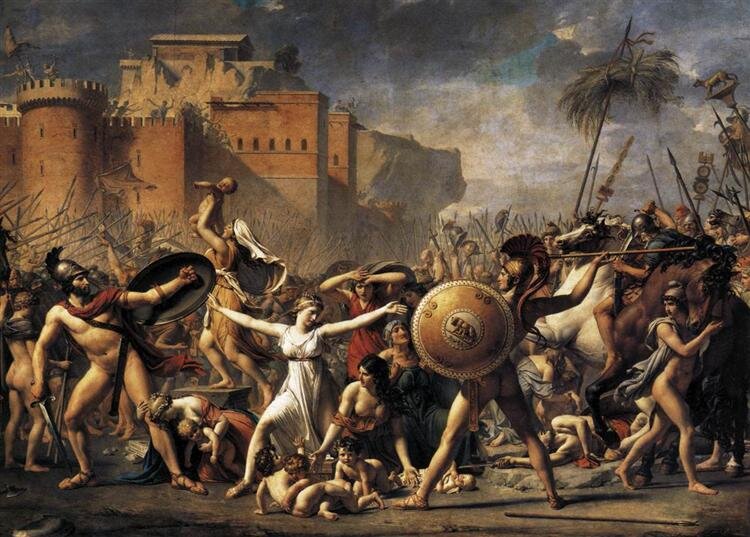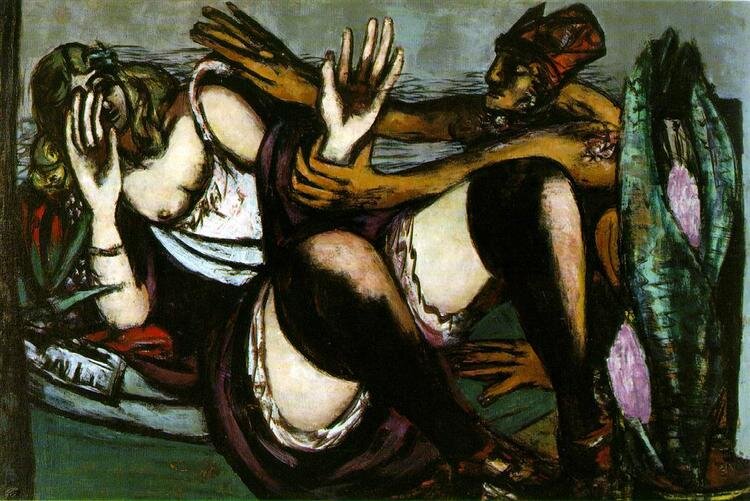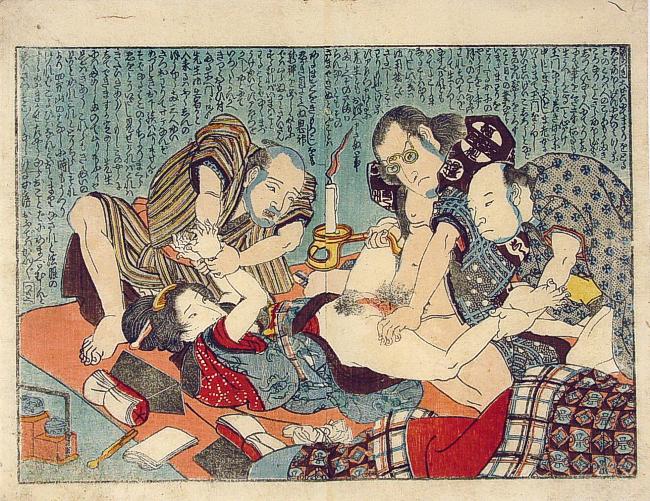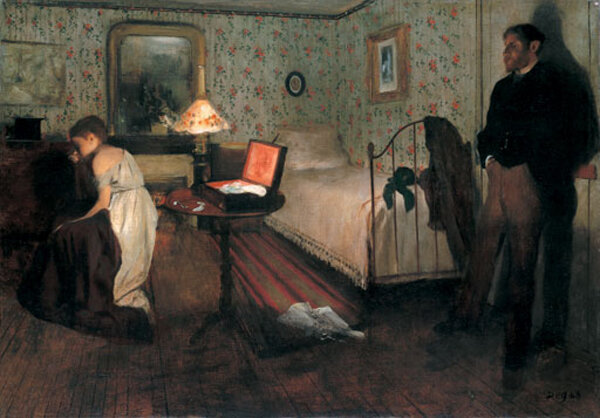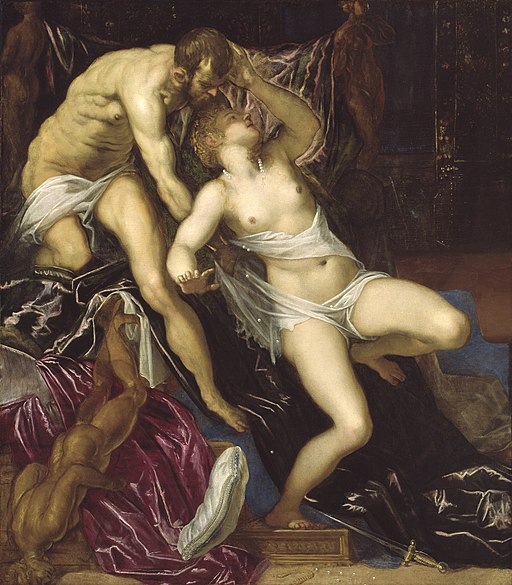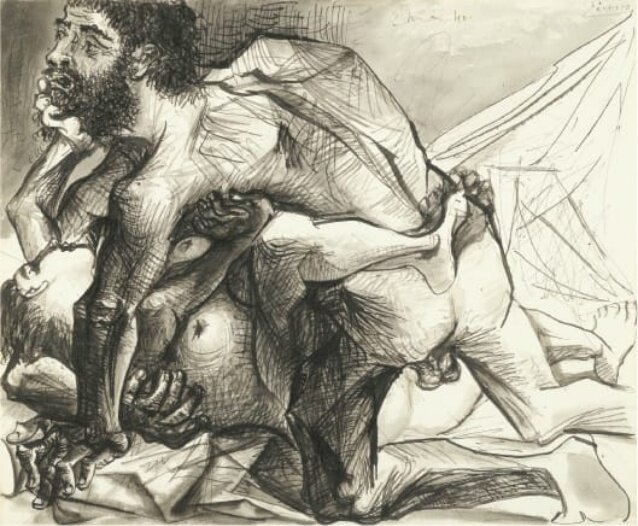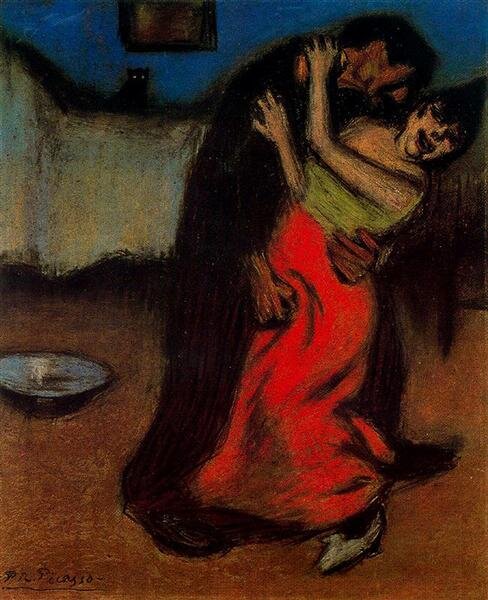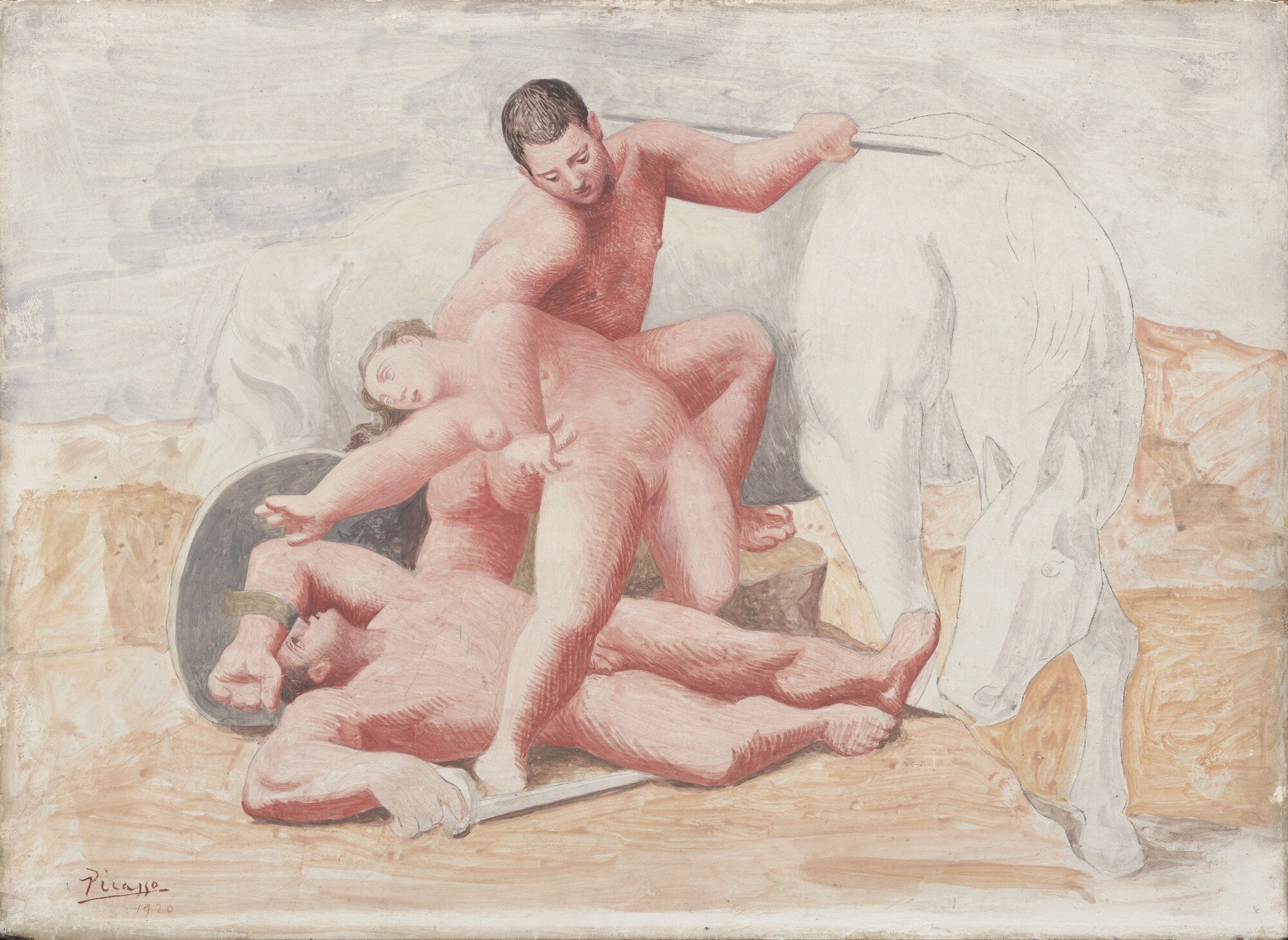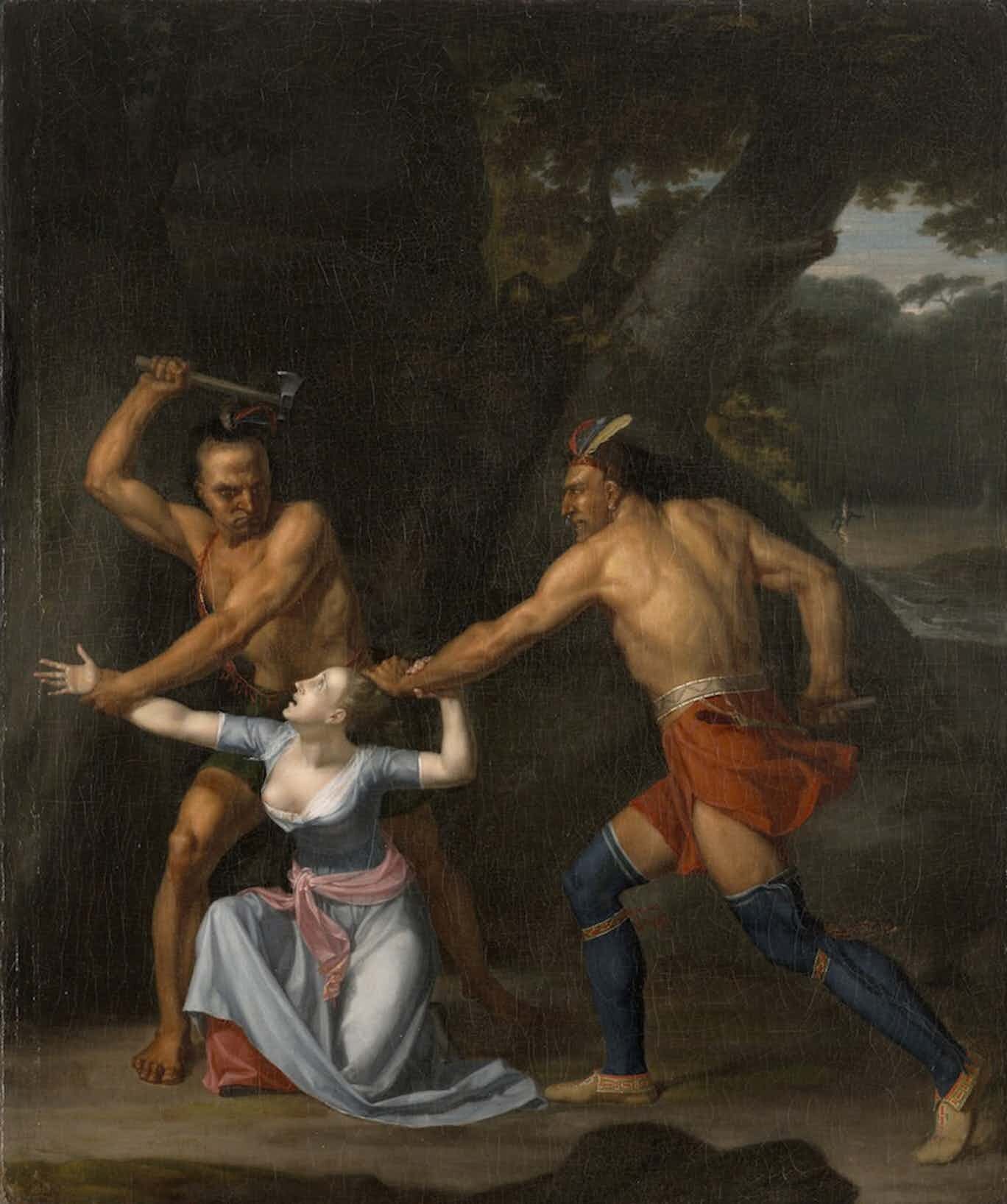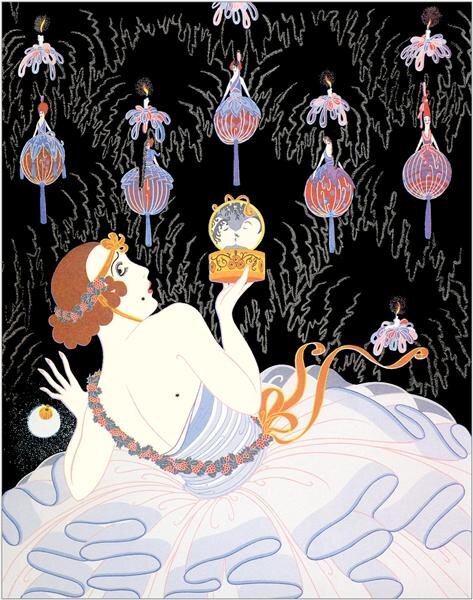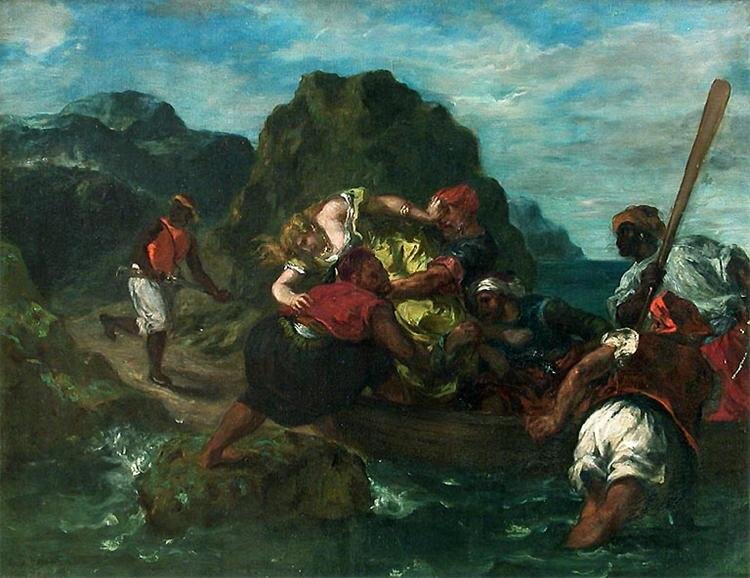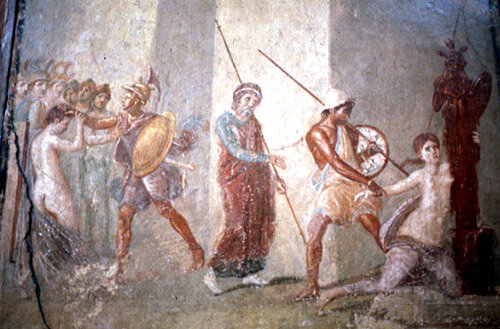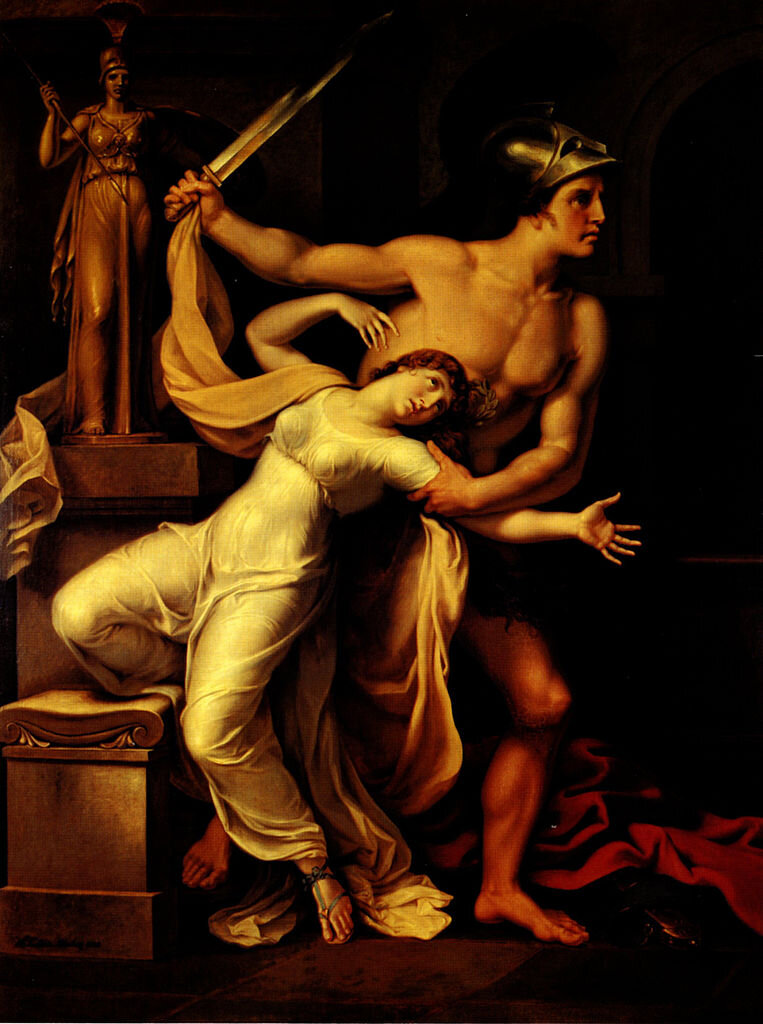echoes of the sabine women
impression of Nadia Murad
Yazidi Human Rights Activist, Nadia Murad was kidnapped by ISIS, imprisoned, raped and tortured repeatedly. Upon her escape she founded Nadia’s Initiative, an organization dedicated to helping victims heal; and to ending the use of sexual violence as a weapon of war and armed conflict.
“ISIS did not come down from the sky. They found the opportunity to grow, and the world allowed them to grow.”
The Rape of the Sabine Women, Giambologna, Loggia dei Lanzi, Florence, photo by Randolph Croft
The Rape of the Sabine Women
Determined to populate their new city at any cost, the Romans devised a plan to abduct the Sabine women during a festival to which everyone was invited.
In Roman mythology, shortly after founding the new city of Rome, Romulus became concerned that the population of this young city, consisting largely of male bandits, did not include insufficient women to augment the population for it to last more than one generation.
Romulus and the Senate agreed that the men of Rome should search the surrounding regions for women with which to establish families. Negotiations with all of the surrounding communities, however, failed. The neighbouring Sabines were particularly opposed to the idea of allowing their women to marry the Romans, fearing the emergence of a rival society.
Refusing to accept NO for an answer, the Romans resorted to force. They devised an elaborate plan to abduct the women during the festival of Neptune Equester to which people of all the neighbouring towns were invited.
Romulus signalled his men by rising and folding his cloak and then throwing it around him again, at which point the Romans seized the Sabine women and fought off the Sabine men.
A total of 30 women, largely virgins, were abducted and “implored” to accept the Roman men as their new husbands.
Scholars have attempted to diminish the intensity of the word rape — interpreting it as an abduction or kidnapping as opposed to immediate sexual assault; however, since the women were taken against their will, the end result is the same.
The historian Livy writes that Romulus endeavoured to negotiate with the women directly in an effort to circumvent the “pride of their parents in denying intermarriage to their neighbours” offering the women free choice as well as civic and property rights and the promise that they would be “mothers of freemen”.
Ovid however saw the abduction of the Sabine Women as a vehicle for the Roman men to fulfill their sexual desires rather than an attempt to procure wives for procreation.
This story became a frequent subject for sculptors and painters, particularly during the Renaissance and post-Renaissance eras.
Such depictions of women being taken against their will, inevitably carve pathways in the mind of the viewer. In presenting women as victims these works support the idea that this sort of behaviour is fundamentally acceptable.
It’s time to recognize that such behaviour is not acceptable.
“Those that fail to learn from history are doomed to repeat it.”
raped Women in Art
Viewing these masterpieces with contemporary eyes allows us to re-examine archaic ideas, learn from the past and envision alternatives.
Nadia Murad
Nadia Murad
The Nobel Peace Prize 2018 © Nobel Media AB. Photo: K. Opprann
Nadia Murad (born 1993) is an Iraqi Yazidi human rights activist, presently living in Germany. In 2014, she was kidnapped from her hometown Kocho and held by the Islamic State for three months.
Murad is the founder of Nadia's Initiative, an organization dedicated to "helping women and children victimized by genocide, mass atrocities, and human trafficking to heal and rebuild their lives and communities".
In 2018, she and Denis Mukwege were jointly awarded the Nobel Peace Prize for "their efforts to end the use of sexual violence as a weapon of war and armed conflict". She is the first Iraqi and Yazidi to be awarded a Nobel Prize.
References
- New Larousse Encyclopedia of Mythology, Hamlyn Publishing Group Ltd., New York, 1959
- Ancient Mirrors of Womanhood, Merlin Stone, Beacon Press, Boston, 1984
- When God Was A Woman, Merlin Stone, Harvest Edition, 1976
- The Civilization of the Goddess, The World of Old Europe, Marija Gimbutas, HarperCollins Publishers, 1991
- The Language of the Goddess, Marija Gimbutas, HarperRow publishers, San Francisco, 1989


